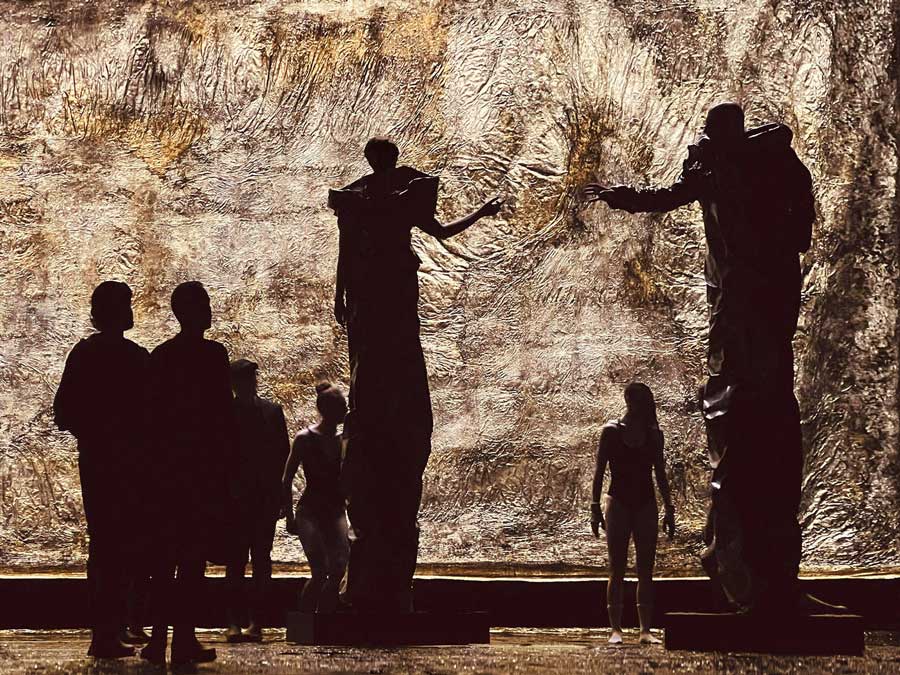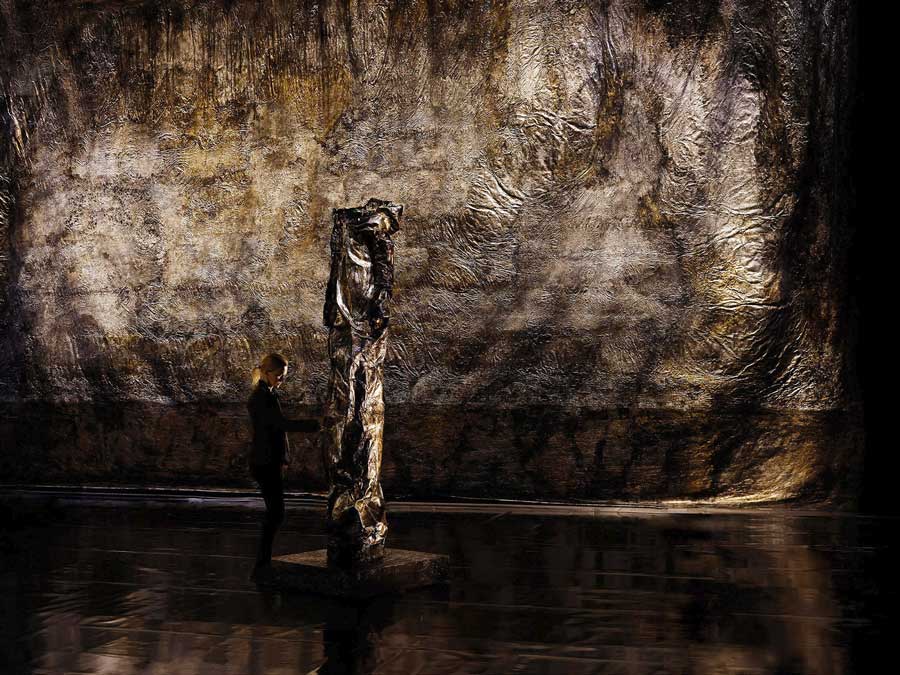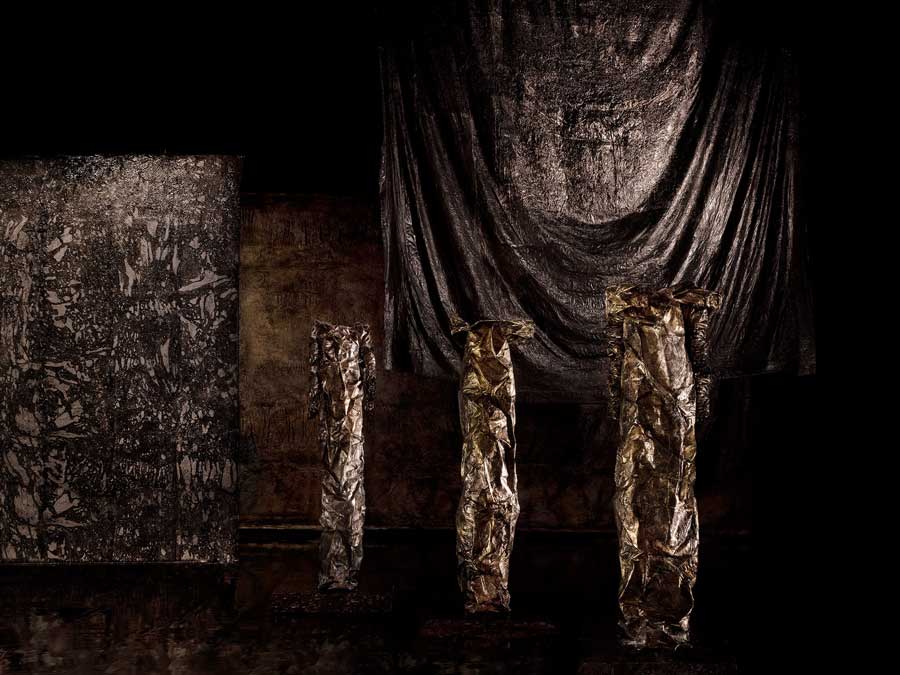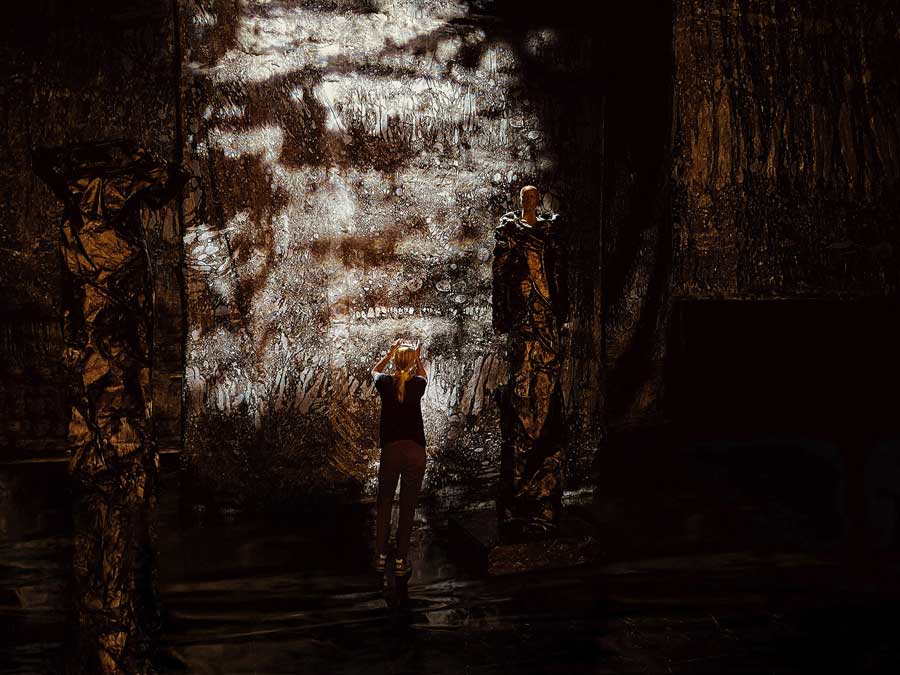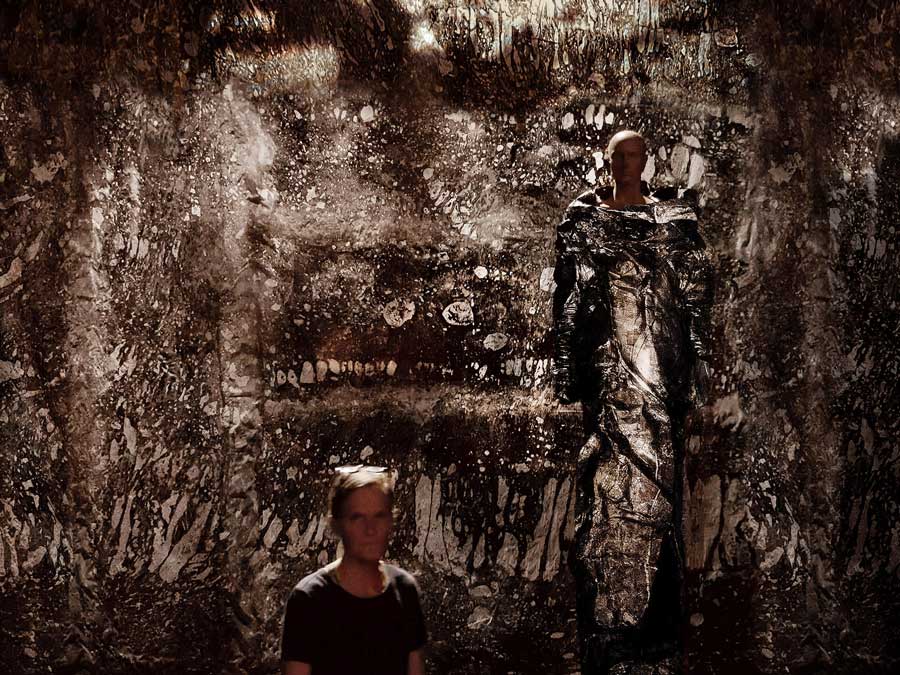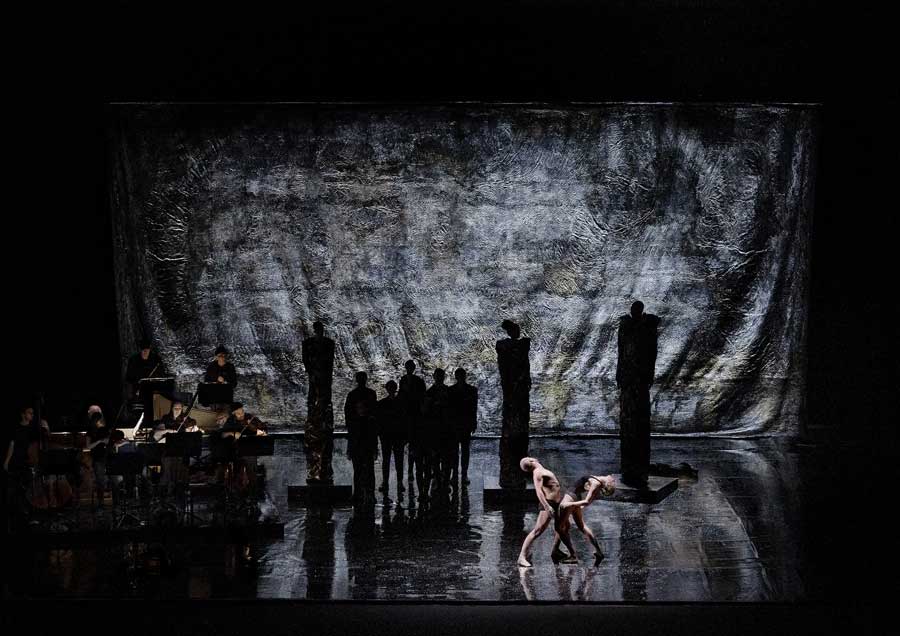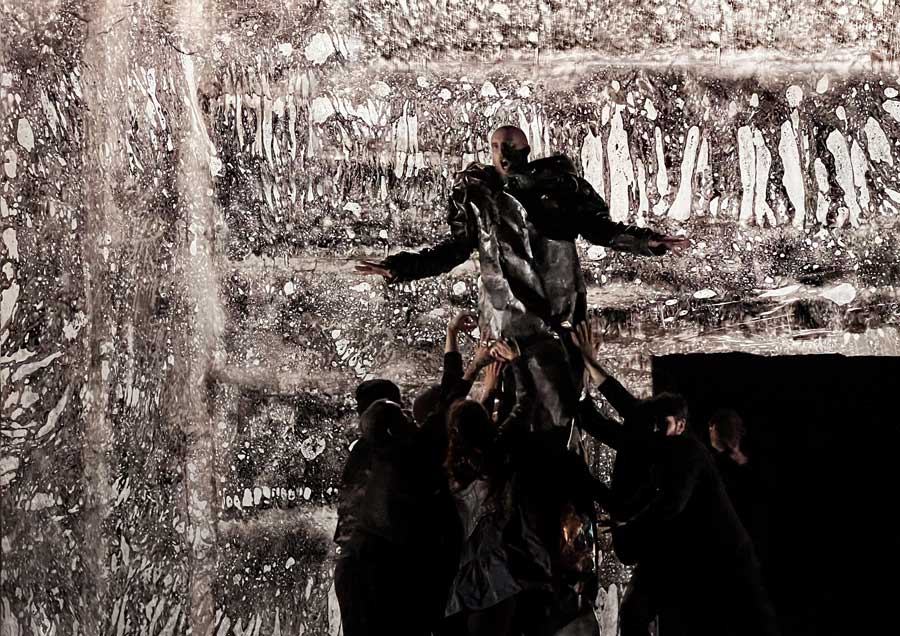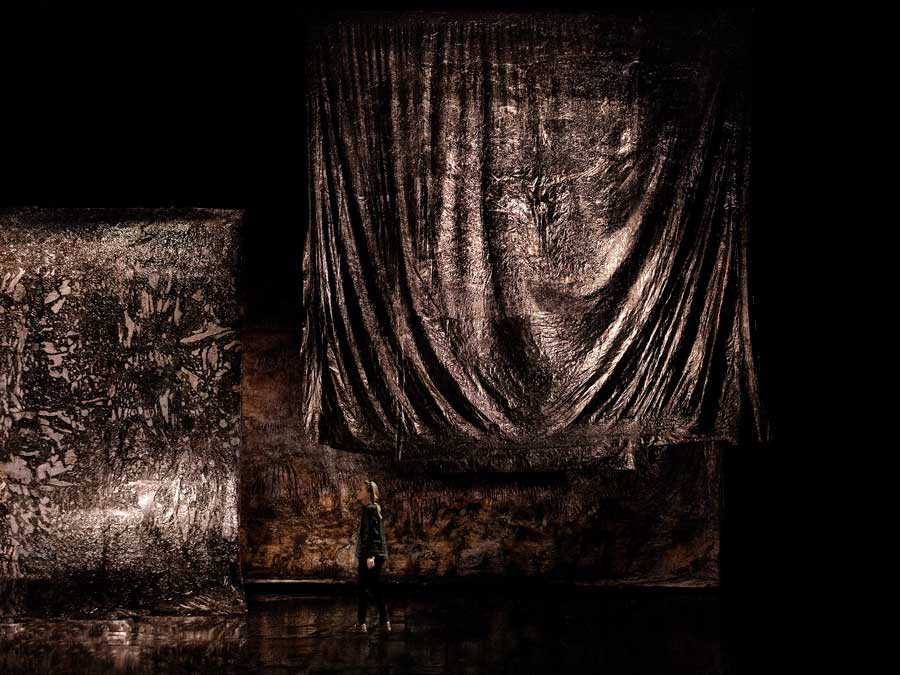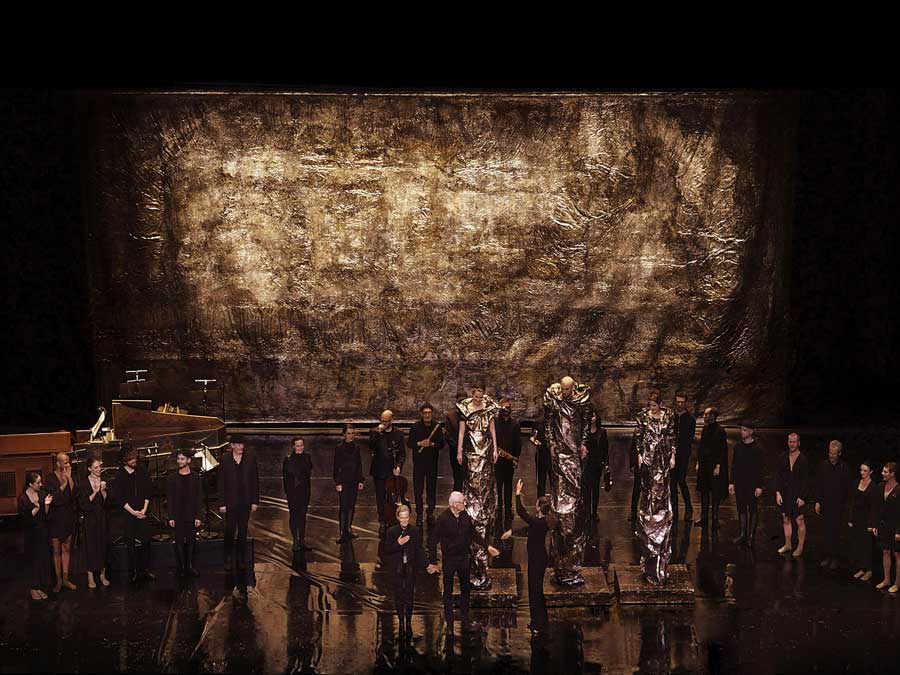Scenography of Dido & Aeneas Opera by Purcell
in collaboration with William Christie, musical Director of Les Arts Florissants and choreographer Blanca Li
Madrid, Compiègne, Versailles, Barcelone, 2023
In the set I designed for Henry Purcell and Nahum Tate’s opera Dido & Aeneas, I wanted to go beyond the creation of a set by immersing the opera house in a total work of art merging place, music, song and dance. This scenography is inhabited by creations that I call Matière-Lumière and which embody the cosmic principle of the transformation of matter by light. It unfolds in the form of three monumental veils, one of which is a translucent triptych, and three sculpture-costumes for the main performers.
Light is, in my opinion, the most beautiful form of expression of love, and the primary source of the meeting of the two souls Dido and Aeneas. Their story is transcribed by a “Performance”, interpreted by the light that carries their personal experiences to a universal scale. The organic vibration of a fossilised light, which has become a living skin that breathes and envelops them draws an intimate relationship between the spectators and the love story of Dido and Aeneas on a physical, psychological and spiritual scale. Through its dynamic and evolving writing in the subtle material of the work of art, the light connects us to the spirits of the two souls. It guides them, animates them and, through Dido’s death, sublimates their love into a universal and eternal love.
The score played by the reflection, refraction, absorption and transmission of Light on the Matière-Lumière works, allows an infinite number of possible views depending on the work and the position of the spectator. The Matière-Lumière veils as well as the sculpture-costumes, are in perpetual evolution, going from the mineral, vegetable, animal, human kingdom to the divine. Appearing and disappearing in the light, they create a bewitching link, offering an almost carnal relationship with the bodies of the lovers and the song. It is not the light that is projected on stage but the light that emanates from the works and beings.
The sculpture-costumes merge the singers who inhabit them with all the scenic elements. The light transforms these sculptures, in particular the one worn by Renato Dolcini who plays Aeneas but also, draped in darkness, the Great Witch. The immobility of the singers dressed in the costume sculptures gives them an hieratic attitude that contributes to giving a timeless meaning to the opera’s message. The triptych of translucent veils, material dissolved and etched by light, embodies distant, organic and living worlds. Like spirits, which become incarnate, its celestial fire amplifies the cosmic force of the song.
The first work, a monolith of embers and ashes, is premonition: it evokes Dido’s death in the absolute blackness of a petrified light. In the second veil, it is transformed into a luminous landscape of a sensitive world in the making. The spirits of nature are pulsating here, their celestial fire sublime and amplifying the cosmic force, the eternal magic of music and dance.
The large reflective surface of the black water that covers the floor is the matrix of the initiatory journey… a mirror portrait, face to face with oneself… the black water links us with heaven and earth, brings us closer to unity. The reflections of the veil in the depth of the water, the melting of the crystals of the soul and the immersion in the infinity of the universe resonate with Dido’s death, crossing the mirror. Like a guardian of the threshold who alone knows the secret, the black monolith bears witness to the imprint of their passage, of the whole story.
Evi Keller, 2023

